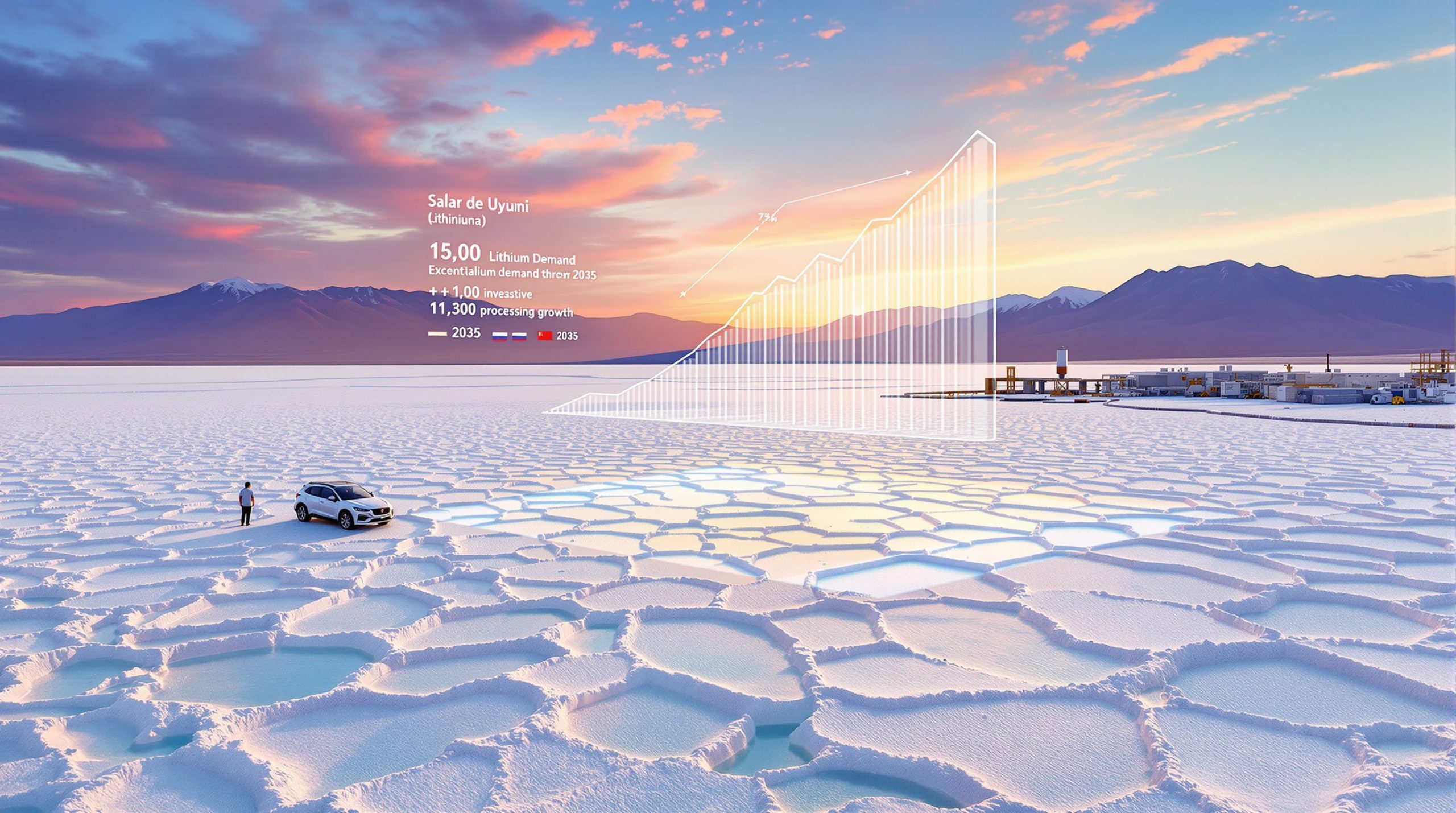What Are the World's Top 20 Largest Gold Mines?
Gold mining continues to be a cornerstone of the global economy, with production reaching unprecedented levels to meet growing demand from investors, central banks, and industries. As of 2024, global gold production achieved a record 3,661 tonnes (approximately 120 million ounces), according to World Gold Council estimates. This surge in production comes as all‐time high gold prices have driven renewed interest in the precious metal.
The world's top 20 largest gold mines represent engineering marvels and economic powerhouses that significantly impact both local economies and global markets. These operations often process tens of thousands of tonnes of ore daily, employing thousands of workers and utilizing cutting-edge technologies to extract gold from increasingly complex deposits.
How Are Gold Mines Ranked by Size?
Production Metrics as the Primary Ranking Factor
Gold mines are primarily ranked based on their annual production volumes, measured in ounces. The largest operations produce well over a million ounces annually, with elite mega-complexes approaching or exceeding three million ounces per year. This production-based ranking provides a standardized way to compare operations globally despite varying geological conditions and extraction methods.
For perspective, a mine producing 500,000 ounces annually (approximately the #20 position) generates gold worth roughly $1 billion at current market prices.
Other Important Sizing Factors
While annual production remains the dominant ranking metric, several other factors influence a mine's significance in the global landscape:
- Total gold reserves and resources: Indicates future production potential
- Mine life expectancy: Reflects sustainability of operations
- Processing capacity: Measures throughput capabilities
- Economic importance: Contribution to host country GDP and exports
- Operational efficiency: Production costs (AISC – All-In Sustaining Costs)
- Ore grade: Higher grades generally mean more profitable operations
Industry Insight: "Reserve" refers to economically extractable gold under current conditions, while "resource" includes potentially valuable deposits that may become economically viable in the future.
The Global Gold Mining Landscape in 2024-2025
Regional Distribution of Major Gold Mines
The world's premier gold operations span diverse geographies, with significant concentrations in:
- North America: Particularly Nevada's Carlin Trend, home to numerous high-grade deposits
- Central Asia: Uzbekistan and Kazakhstan host several mega-mines
- Africa: Ghana, Mali, and DRC feature world-class operations
- Oceania: Australia and Papua New Guinea maintain significant production
- South America: Brazil and the Dominican Republic host major operations
- Southeast Asia: Indonesia's massive porphyry deposits yield substantial gold
This geographic diversity helps balance political risks and provides stability to the global gold supply chain despite regional disruptions.
Production Trends and Market Dynamics
Several key trends are reshaping the gold mining landscape:
- Technological innovation: Deployment of autonomous equipment reducing operational costs
- Processing advances: Improving recovery rates from complex ores
- Economic incentives: Higher gold prices enabling development of previously marginal deposits
- Consolidation: Major mining companies acquiring smaller operations through gold M&A trends
- ESG focus: Growing emphasis on environmental and social governance
These factors continue to drive evolution in the industry, with leading companies investing billions in expansions and optimizations to maintain competitive positions.
#20: Meadowbank Complex (Canada)
Production and Ownership
- 2024 Production: 504,719 ounces
- Owner: Agnico Eagle Mines (100%)
- Location: Nunavut Territory, Canada
Operation Highlights
The Meadowbank Complex represents Agnico Eagle's pioneering venture into Arctic mining, with operations specially adapted to function in extreme northern environments where temperatures can plunge below -50°C. The operation overcomes significant logistical challenges, including the need to transport supplies via an annual sealift during the brief ice-free period.
The complex has been revitalized through the development of the satellite Amaruq deposit, located 50 km from the main processing facility. This strategic expansion has extended the operation's life by providing a new source of ore to the existing mill infrastructure, demonstrating Agnico Eagle's commitment to maximizing asset value through regional development.
#19: Paracatu (Brazil)
Production and Ownership
- 2024 Production: 528,574 ounces
- Owner: Kinross Gold (100%)
- Location: Minas Gerais, Brazil
Operation Highlights
As Brazil's largest gold mine, Paracatu operates as a large-scale open-pit operation with a substantial processing facility capable of handling massive volumes of ore. The operation exemplifies successful adaptation to lower-grade deposits, compensating with economies of scale and efficient recovery methods.
Recent optimization efforts have extended Paracatu's operational life to 2032, demonstrating how technological improvements can transform the economics of previously marginal deposits. The mine processes large volumes of lower-grade ore through a combination of milling and heap leaching techniques that maximize gold recovery while maintaining competitive production costs.
#18: Tarkwa (Ghana)
Production and Ownership
- 2024 Production: 537,200 ounces
- Owner: Gold Fields (90%), Government of Ghana (10%)
- Location: Western Region, Ghana
Operation Highlights
Tarkwa stands as one of Gold Fields' flagship African assets, utilizing conventional open-pit mining methods to extract gold from multiple pits within the lease area. The operation has maintained consistent production levels despite the challenges facing the company's other Ghanaian asset, Damang.
The mine employs a carbon-in-leach (CIL) processing method that has proven particularly effective for the ore characteristics at Tarkwa. This technological application has helped maintain production efficiency despite declining ore grades, highlighting the importance of matching processing technology to specific geological conditions.
#17: Pueblo Viejo (Dominican Republic)
Production and Ownership
- 2024 Production: 587,500 ounces
- Owners: Barrick Gold (60%), Newmont (40%)
- Location: Sanchez Ramirez Province, Dominican Republic
Operation Highlights
This world-class operation is currently undergoing a transformative $1.4 billion expansion project that will extend production beyond 2040 and enable the processing of lower-grade ore that was previously uneconomical. The expansion represents one of the mining industry's most significant current investments and aims to boost annual output to more than 800,000 ounces, potentially moving this operation significantly higher in future rankings.
Pueblo Viejo overcame significant technical challenges related to processing refractory ore, which contains gold locked within sulfide minerals. The operation implemented specialized pressure oxidation technology to liberate this gold, demonstrating how technological innovation can unlock previously inaccessible resources.
#16: Boddington (Australia)
Production and Ownership
- 2024 Production: 590,000 ounces
- Owner: Newmont (100%)
- Location: Western Australia, Australia
Operation Highlights
Boddington made mining history in 2021 as the world's first open-pit gold mine to deploy a fully autonomous haul truck fleet, representing a major advancement in mining automation. This technological leap has improved operational efficiency while enhancing safety by removing operators from potentially hazardous environments.
Operating within the geologically significant Saddleback greenstone belt, this large-scale operation is one of Newmont's three Australian assets and also produces substantial copper as a by-product, adding economic resilience through commodity diversification. The mine's dual-commodity nature helps buffer against gold market performance fluctuations while providing exposure to the growing demand for copper in renewable energy technologies and electric vehicles.
#15: Kumtor (Kyrgyzstan)
Production and Ownership
- 2024 Production: 592,142 ounces (estimated)
- Owner: Kyrgyzaltyn OJSC (100%)
- Location: Issyk-Kul Region, Kyrgyzstan
Operation Highlights
Kumtor's ownership changed dramatically in 2022 when the Kyrgyz government expropriated the operation following a prolonged dispute with previous owner Centerra Gold. This contentious transfer highlights the political risks inherent in mining operations, particularly in jurisdictions with evolving regulatory frameworks.
The high-altitude operation (at approximately 4,000 meters above sea level) remains a critical economic asset for Kyrgyzstan, accounting for nearly 10% of the country's GDP and a significant portion of its export earnings. The mine's extreme location presents unique operational challenges, including glacier management and specialized equipment requirements for the harsh mountain environment.
#14: Lihir (Papua New Guinea)
Production and Ownership
- 2024 Production: 614,000 ounces
- Owner: Newmont (100%)
- Location: Lihir Island, Papua New Guinea
Operation Highlights
Acquired by Newmont through its $17 billion purchase of Newcrest Mining in 2023, Lihir operates on a volcanic island and processes ore from what was once an active volcano. This geologically unique setting creates both advantages and challenges, with the geothermal activity providing potential energy sources but also requiring specialized engineering solutions.
The operation features distinctive processing challenges due to the refractory nature of its ore but benefits from substantial reserves that support a multi-decade mine life. Lihir utilizes pressure oxidation technology to break down sulfide minerals that encapsulate gold particles, enabling recovery from ore that would otherwise be impossible to process economically using conventional methods.
#13: Tasiast (Mauritania)
Production and Ownership
- 2024 Production: 622,394 ounces
- Owner: Kinross Gold (100%)
- Location: Tasiast, Mauritania
Operation Highlights
Since acquiring Tasiast in 2010, Kinross has transformed the operation through significant expansion projects that have increased processing capacity from the initial 8,000 tonnes per day to current levels. The operation exemplifies successful mine development in challenging geopolitical and geographical environments.
As Kinross's only African operation following strategic portfolio restructuring, Tasiast represents a cornerstone asset for the company's global production profile. The mine has overcome significant hurdles, including remote location challenges and water management in an arid environment, to become one of Africa's premier gold operations.
#12: Canadian Malartic (Canada)
Production and Ownership
- 2024 Production: 655,654 ounces
- Owner: Agnico Eagle Mines (100%)
- Location: Quebec, Canada
Operation Highlights
As Canada's largest open-pit gold mine, Canadian Malartic became wholly owned by Agnico Eagle in 2023 following a complex transaction with Pan American Silver and Yamana Gold. This ownership consolidation has streamlined decision-making and operational integration with Agnico's other assets in the region.
Located in the prolific Abitibi gold belt, which has produced over 170 million ounces since discovery, the operation continues to be a cornerstone of Canadian gold production. The mine is currently transitioning toward underground development at the Odyssey project, which will extend mine life substantially while shifting from open-pit to underground mining methods—demonstrating the evolution of mature mining operations to access deeper resources.
#11: Detour Lake (Canada)
Production and Ownership
- 2024 Production: 671,950 ounces
- Owner: Agnico Eagle Mines (100%)
- Location: Ontario, Canada
Operation Highlights
Agnico Eagle invested C$100 million in Detour Lake in 2024 to develop the operation's underground potential, with ambitious aims to boost annual production to 1 million ounces. This strategic investment represents the growing trend of major miners investing in brownfield expansions rather than riskier greenfield developments.
The substantial capital allocation is expected to extend the mine's operational life to 2054, with further exploration potentially pushing that timeline even further. Detour Lake exemplifies successful resource conversion, transforming geological potential into economically viable reserves through targeted investment and technical innovation.
#10: Kibali (Democratic Republic of Congo)
Production and Ownership
- 2024 Production: 686,667 ounces
- Owners: AngloGold Ashanti (45%), Barrick Gold (45%), Société Minière de Kilo-Moto (10%)
- Location: Haut-Uele Province, Democratic Republic of Congo
Operation Highlights
As Africa's largest gold mine, Kibali combines open-pit and underground operations with state-of-the-art processing facilities that maximize recovery from varying ore types. The operation showcases successful infrastructure development in a challenging jurisdiction, including construction of three hydropower stations that reduce both operating costs and carbon footprint.
Recent exploration has identified significant new gold deposits near the existing operation, promising to extend the mine's life and potentially increase future production volumes. This ongoing resource expansion demonstrates the importance of continuous exploration even at established mining operations.
#9: Loulo-Gounkoto (Mali)
Production and Ownership
- 2024 Production: 693,863 ounces (estimated)
- Owners: Barrick Gold (80%), Government of Mali (20%)
- Location: Kayes Region, Mali
Operation Highlights
Despite being Barrick's largest operation in Mali, Loulo-Gounkoto has been at the center of a contentious dispute between the mining company and the Malian government over alleged unpaid taxes following the country's updated mining code. The conflict escalated in early 2025 with Mali shuttering Barrick's office in Bamako and detaining company executives, highlighting the geopolitical risks inherent in mining operations.
The complex consists of the Loulo underground operation and the Gounkoto open-pit mine, with ore from both sources processed at a centralized facility. This integrated approach maximizes operational efficiency while providing flexibility to prioritize extraction from different areas based on grade, strip ratio, and other economic factors.
#8: Ahafo (Ghana)
Production and Ownership
- 2024 Production: 798,000 ounces
- Owners: Newmont (90%), Government of Ghana (10%)
- Location: Brong-Ahafo Region, Ghana
Operation Highlights
As Newmont's flagship African operation following its asset optimization strategy, Ahafo combines both surface and underground mining methods to extract value from varying ore bodies. This operational flexibility allows the mine to sequence production optimally based on changing economic conditions.
The mine began commercial production in 2006 and has since developed into one of West Africa's most significant gold producers, with ongoing investments to maintain production levels. Ahafo's development has included significant community infrastructure projects, including schools, healthcare facilities, and agricultural programs that exemplify modern approaches to shared value creation in mining.
#7: Kazzinc Consolidated (Kazakhstan)
Production and Ownership
- 2024 Production: 1,000,000 ounces
- Owner: Kazzinc Ltd (Glencore holds 70% stake)
- Location: East Kazakhstan Region, Kazakhstan
Operation Highlights
This diversified mining complex produces not only gold but also zinc, lead, and other metals, creating operational synergies and economic resilience through commodity diversification. The polymetallic nature of the operation allows for cost-sharing across multiple revenue streams.
In 2024, Glencore abandoned plans to sell its 70% stake in Kazzinc after potential Chinese buyers failed to meet its valuation expectations for the operation. This decision highlights the strategic value of large-scale, diversified mining assets in the current geopolitical environment, particularly those with exposure to both precious and base metals.
#6: Batu Hijau (Indonesia)
Production and Ownership
- 2024 Production: 1,009,000 ounces (estimated)
- Owner: PT Amman Mineral Nusa Tenggara
- Location: Sumbawa Island, Indonesia
Operation Highlights
This copper-gold operation gained prominence in 2023 when its owner, Amman Minerals, completed an IPO that created at least six new billionaires and propelled the company into MINING.com's ranking of the world's 50 most valuable mining stocks. This dramatic value creation demonstrates the potential wealth generation from well-managed mining assets in resource-rich jurisdictions.
The large-scale open-pit operation processes both gold and copper from a substantial porphyry deposit, with copper contributing significantly to overall economics. This geological formation—typical of the Pacific "Ring of Fire"—creates deposits where gold occurs as a valuable by-product of copper mining, enhancing project economics through multi-metal production.
#5: Almalyk Complex (Uzbekistan)
Production and Ownership
- 2024 Production: 1,114,000 ounces (estimated)
- Owner: Almalyk Mining and Metallurgical Combine
- Location: Tashkent Region, Uzbekistan
Operation Highlights
As Uzbekistan's primary copper producer, the Almalyk complex also generates substantial gold as a by-product of its copper operations. This integrated metallurgical facility exemplifies the synergies possible in multi-metal extraction and processing.
The operation is undergoing an ambitious $15
Interested in Staying Ahead of Major Gold Discoveries?
Gain real-time alerts on significant ASX mineral discoveries with Discovery Alert's proprietary Discovery IQ model, helping you identify actionable gold investment opportunities before the market. Explore how historic gold discoveries have generated substantial returns by visiting our dedicated discoveries page and begin your 30-day free trial today.




